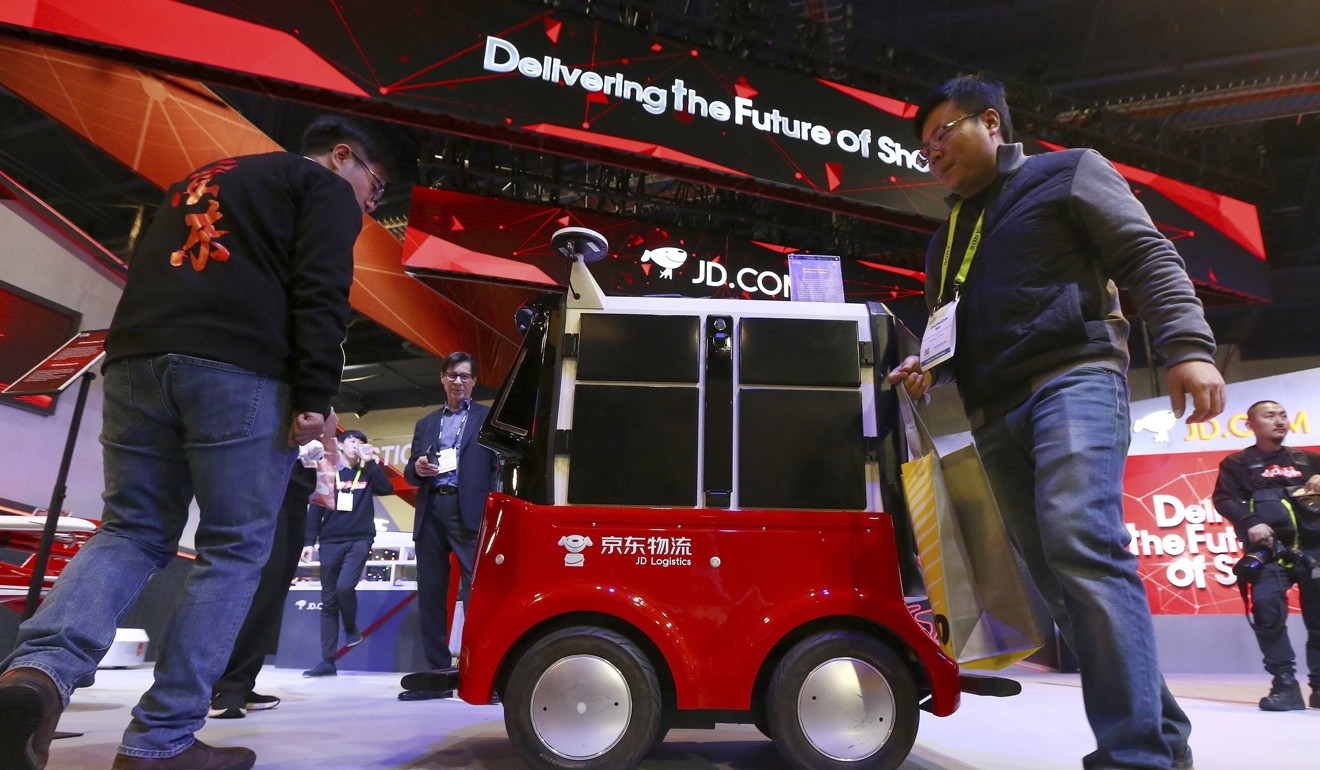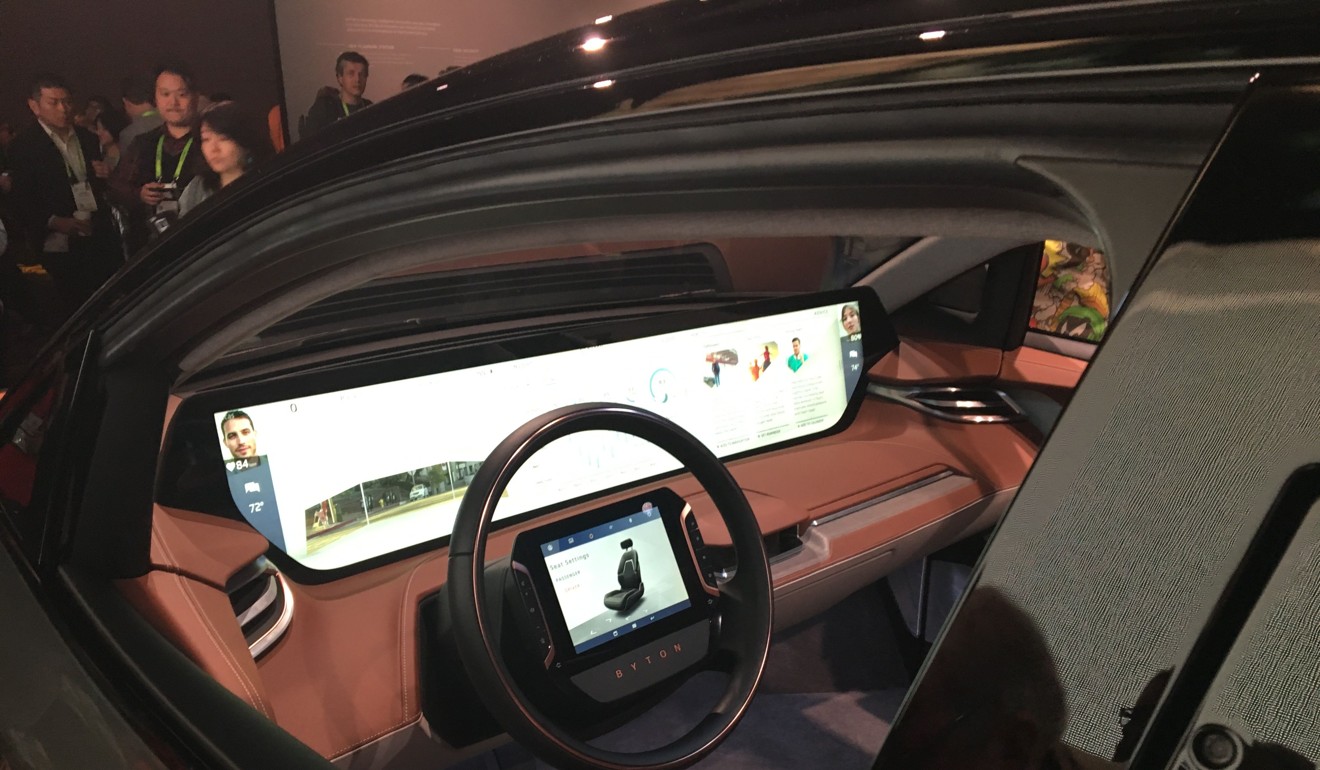
Giant CES fair in Vegas shows US remains too big to ignore for Chinese tech firms even as trade war swirls
- Times are tough in 2019 thanks to the US-China trade war and an escalating war of words between Washington and Beijing over tech leadership
- Chinese companies at CES all agreed though that while the trade war has adversely impacted their business in the US, it remains a very important market
CES, the world’s largest consumer electronics trade show held annually in Las Vegas, has traditionally been an event for companies, from global names such as Sony, Samsung and Huawei to smaller Shenzhen-based suppliers, to show off their technology, products and services – usually to an eager crowd.
It has even been referred to as the ‘Chinese Electronics Show’ in recent years because of the increasing presence of participants from China.
But for Chinese suppliers hoping to use the event as a way to gain new business leads, times are tough in 2019 thanks to the US-China trade war and an escalating war of words between Washington and Beijing over leadership in a range of cutting edge technologies and innovations, such as artificial intelligence and 5G mobile networks.
The US and China, the two biggest economies in the world, have slapped billions of dollars in tariffs on each other, sending markets reeling and commentators into a frenzy over the long-term implications for US-China relations.
But at the Design and Source tent, where component suppliers set out their wares, it was more quiet then usual as rows of Chinese salespeople manning small booths stood forlornly in front of product displays, trying hard to catch the eye of passers-by in the hope of snaring a sale.
Chinese companies that the Post spoke to at CES all agreed that the US-China trade war has adversely impacted their business with US customers, but all said that regardless of the decreasing margins, the US market remains extremely important.
“We are definitely affected by the tariffs, in fact one of our big US customers is moving their manufacturing operations outside of China to Vietnam to avoid an increase in the cost of doing business,” said Yuki, a saleswoman from Dongguan-based Ruiheng Electronic Co. Ltd., which manufactures power adaptors and circuit boards.
“Some US customers have already dropped us as a supplier,” she said, pointing out that she expects more companies to do so if tariffs increase.
Multinationals, many headquartered in developed parts of Asia, have examined Vietnam closely since September, when the US levied tariffs on US$200 billion of exports from China, the largest single move in the trade conflict so far.
Before the trade war, Vietnam was attractive to foreign investors as a supply chain because of its cheap labour, pro-business government policies and proximity to China. The potential to avoid US tariffs has now provided an extra incentive.
The main bulk of Ruiheng’s customers are from the US, a particularly lucrative market for the company, which is both an original equipment manufacturer and an original design manufacturer, said Yuki.
“Margins in China are razor-thin, it’s difficult to survive if you only sell in China,” Yuki said. “But now we are considering creating our own brand to sell products online, to combat the fall in sales.”
However, the company will continue to supply US companies – despite the tariffs – instead of focusing on other markets as the US is still a massive source of potential profit, she said.
The US is still the world’s largest consumer market, with Americans spending US$12.5 trillion in 2017, nearly three times as much as China, according to Capstone Advisory Group. This has made the US a big draw for Chinese companies for years, a staging post in their quest to go global.
The White House has seized on Beijing’s “Made in China 2025” policy plan, which aims to transform the country into an advanced manufacturing power by targeting 10 emerging sectors including next generation IT, robotics, clean-energy vehicles and biotechnology – as a form of unfair intervention.
While China views the blueprint as key to achieving its long-term goals, the White House has argued the state-led approach violates World Trade Organisation rules and could create an unfair playing field for foreign investors. Meanwhile, US President Donald Trump has accused China of engaging in unfair trade practices and theft of US intellectual property for years.
Both countries are now in the middle of a 90-day truce, whereby the US has temporarily agreed not to further raise tariffs on US$200 billion worth of Chinese goods until further talks take place. China has also agreed to buy a “very substantial” amount of agricultural, energy, industrial and other products from the US as part of the deal.

An aisle down from Ruiheng Electronic was a Shenzhen-based company called Luckystar Technology Co. Ltd., which manufactures tablets, laptops and projectors for customers. Similar to Ruiheng, Luckystar has also felt an impact on revenues from the 10 per cent increase in tariffs levied on Chinese imports to the US, including electronics.
“We are looking at different solutions to this issue, especially if the trade war escalates,” said Rock Zhang, part of the company’s export sales team.
Zhang said one of the solutions some Chinese companies use as a workaround to the US tariffs is to ship products to a different country before sending them to the US as a final destination, a practice known as transshipment.
Meanwhile, an array of Chinese gadget companies who are either already selling to the US, or have their eye on the market, have said that tariffs may have to be to passed on to consumers in the form of higher prices.
CES 2019 kicked off this week with about 20 per cent fewer Chinese exhibitors than the year before, according to data provided by event organiser, the Consumer Technology Association (CTA). Overall floor space occupied by Chinese merchants was roughly the same as the year before though, due to more space being given to larger vendors and less to smaller vendors.
“The US market remains high on the agenda with Chinese private companies, which all hope the trade war can be resolved properly and that both sides agree terms,” said Cheng Maiyue, a founding director of Chinese think-tank Wuzhen Institute and senior fellow at Rocky Mountain Institute in the US. “I would not read too much into the decrease in Chinese attendees, as some companies chose to cut back their marketing expenses due to a slowdown at home.”
Shenzhen-based Remo Technology, which was displaying an artificially-intelligent camera called the Obsbot Tail at CES 2019, said that the US market remains a major target.
“US consumers are more willing to spend on high-end technology gadgets,” said Liu Bo, chief executive of Remo Technology, who said that the estimated price point of US$450 for his new product may be too expensive for Chinese consumers to accept.

Liu added that while Remo has not yet been impacted by tariffs [since it has yet to ship] the company may be forced to raise prices in future if more tariffs are applied to Chinese imports to the US.
“For many Chinese tech companies doing higher-end devices, the US is an important market as customers tend to be less price sensitive and early adopters of technology,” said Reynold Wu, director of product for Hangzhou-based AI company Rokid.
“Even though companies may get hit by tariffs, ultimately consumers also suffer,” Wu said, “A trade war means that lots of things become more expensive, electronics included.”
Liu Jingkang, chief executive of 360-degree camera maker Insta360, said that if tariffs continue to come into effect the firm may consider increasing the prices of accessories to balance out the losses from increased costs.

According to Insta360’s Liu, most Chinese companies in the sector will be affected so prices for Chinese-made electronics will likely rise across the board for consumers.
For Shenzhen-based 1More, a Xiaomi-backed company which produces earphones and brands itself as “China’s Answer to Beats”, the US is its second-largest market after China, about half the size of the domestic market.
“If the US-China trade war escalates and tariffs [on Chinese imports] rise, we may consider outsourcing our manufacturing to countries like Vietnam and India,” said Patrice Chen, an executive of 1More.
However, Chen said that outsourcing its manufacturing for products in the US would be a last resort, as China’s manufacturing industry is still currently one of the world’s best.
Even for artificial intelligence, one of the most sensitive technology sectors in the US-China trade stand-off, Chinese players are putting up a brave front.
iFlyTek, China’s national champion in voice recognition, is preparing to launch a smart recorder overseas, including the US, in the third quarter. The device, due to launch in April domestically, features a touch screen that displays real-time transcription results, with features such as fingerprint authentication and file encryption to protect privacy.
“Without doubt, iFlyTek will aim to go global,” said Li Chuangang, vice-president of the Hefei-based company, on the sidelines of a product preview at CES 2019 this week. “As a leading language technologies provider, we are looking to tap overseas Chinese, major English-speaking countries and any sizeable markets.”
So the message at CES 2019 is clear – as the world’s largest consumer market and the world’s largest economy, the US is still too big to ignore for Chinese companies and the trade war is a hindrance as opposed to a giant ‘no entry’ sign.
“The US-China trade war may still be ongoing, but one day it will end,” said Steven Liu, a sales executive for Shanghai-based Lineprinting Materials, a company that manufactures large touchscreens, digital blackboards and wireless chargers. “It does not make sense for the world’s two largest superpowers to go head-to-head in battle forever.”
“The tariffs may be painful now and affect our margins but ultimately, we cannot just decide to pull out of the US market,” Liu said. “We need to continue building our business here so that we [will benefit] once the trade war is over.”
Inside China Tech podcast: Live from CES 2019 in Las Vegas


